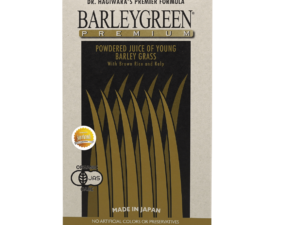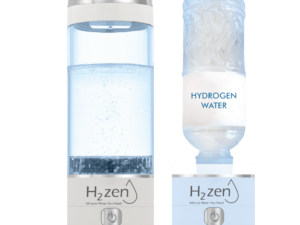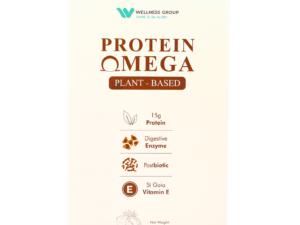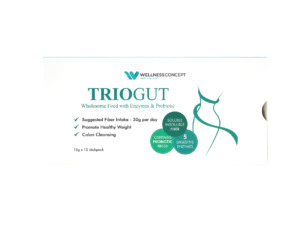What if the secret to a successful detox isn’t just what you remove, but what you add to your body? This guide explores how tiny microbial allies might transform traditional cleansing routines into powerful wellness strategies.
Modern science reveals that beneficial bacteria do far more than aid digestion. Research shows these microorganisms actively support the body’s natural toxin-clearing systems while strengthening immune defenses. Their role extends to hormone balance, nutrient absorption, and even mental clarity—factors critical during cleansing phases.
This article breaks down how specific strains work with detox mechanisms at a cellular level. Clinical studies highlight their ability to bind heavy metals, neutralize free radicals, and promote liver function. Real-world examples demonstrate measurable improvements in energy levels and skin health when combining these approaches.
Key Takeaways
- Beneficial bacteria support multiple detox pathways beyond gut health
- Certain strains enhance toxin elimination through biological processes
- Combining microbial supplements with cleansing may boost immune responses
- Clinical evidence links this approach to improved vitality markers
- Safe implementation requires strain-specific strategies
While trendy wellness practices come and go, the synergy between microbial balance and detoxification stands on rigorous scientific footing. Discover how to harness this relationship for lasting health benefits.
Introduction to Using Probiotics During Detox Programs
Could microscopic organisms hold the key to boosting your body’s toxin-removal efficiency? Modern science bridges traditional fermentation practices with new discoveries about how microbial balance supports natural purification processes.
The human system for neutralizing harmful substances faces unprecedented challenges today. Processed meals, pollution, and chronic stress create toxic burdens that strain natural defenses. This imbalance often manifests as fatigue, skin issues, or digestive discomfort.
Emerging studies reveal specific bacterial strains enhance toxin clearance through the gut-liver network. These microorganisms bind heavy metals, break down metabolic waste, and support enzyme production critical for filtering blood. Unlike extreme fasting protocols, this approach works with the body’s rhythms rather than against them.
| Aspect | Traditional Methods | Microbial Support Approach |
|---|---|---|
| Primary Focus | Toxin elimination | Gut-liver axis optimization |
| Key Components | Fasting, juices | Targeted bacterial strains |
| Safety Profile | Potential side effects | Generally safe, research-backed |
While many associate these beneficial microbes solely with digestive health, their role extends to cellular detox mechanisms. Certain strains increase glutathione production—the body’s master antioxidant—while others neutralize carcinogenic compounds before absorption.
This synergy between microbial ecosystems and innate cleansing pathways offers a sustainable strategy for modern living. By understanding these interactions, individuals can make informed choices about supporting their biological purification processes naturally.
Understanding Detoxification and Probiotics
Your body’s natural purification system works tirelessly, but modern lifestyles introduce new challenges. Science defines this process as “removing harmful substances while maintaining vital functions”—a delicate balance requiring more than just occasional cleanses.
Modern Detoxification Explained
Today’s approach to purification involves complex biological teamwork. It’s not just about eliminating waste—your cells constantly neutralize contaminants from food, air, and household products. The liver, kidneys, and intestinal lining form a dynamic filtration network.
Researchers now emphasize the gut’s role as a biological shield. Beneficial bacteria act like microscopic security guards, trapping heavy metals and breaking down chemical residues before they reach your bloodstream.
Gut Ecosystem Reinforcement
A thriving intestinal environment does more than aid digestion. Studies show balanced microbial communities:
- Produce enzymes that dismantle toxins
- Strengthen the gut lining to prevent leaks
- Support immune cell development
This biological teamwork explains why focusing on gut health has become central to modern wellness strategies. When nourished properly, your microbiome becomes an active partner in maintaining vitality—not just a passive bystander.
Emerging evidence reveals specific microbial strains can even transform harmful compounds into harmless molecules. This process allows safer elimination through regular bodily functions, reducing strain on other organs.
The Science Behind Probiotics and Detox
Your body’s detox network operates like a high-tech waste management plant—and its most skilled workers might surprise you. Microbial allies in the gut work alongside organs to neutralize threats through sophisticated biological teamwork.
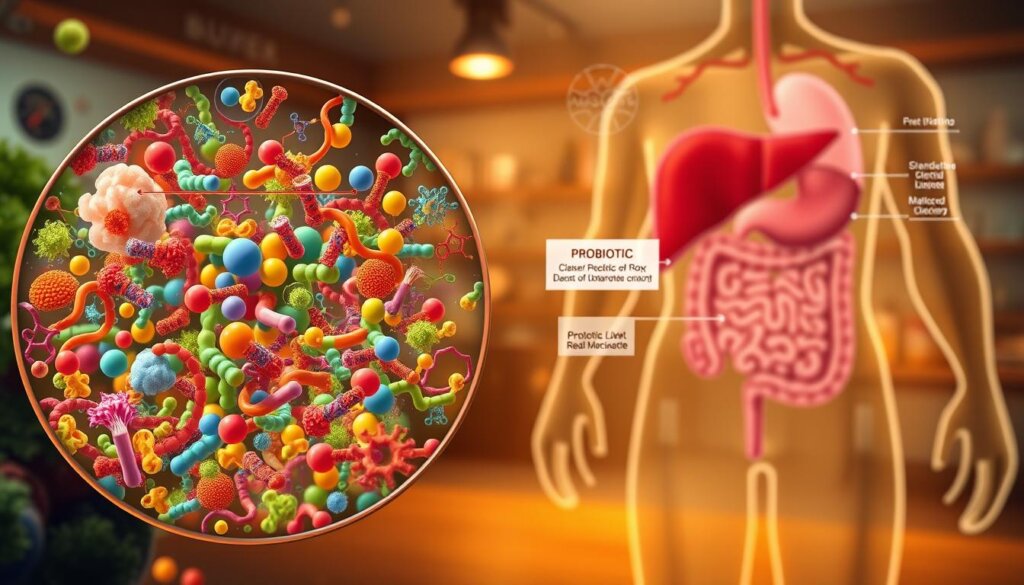
Biological Mechanisms in Detoxification
Beneficial bacteria engage in a microscopic dance with your cells. They produce enzymes that dismantle harmful compounds while boosting glutathione levels—your body’s premier antioxidant. This dual-action approach protects tissues from oxidative damage during toxin processing.
Research highlights how specific strains enhance cytochrome P450 enzyme activity. These liver proteins transform fat-soluble toxins into water-soluble forms for safe elimination. A balanced gut environment also generates short-chain fatty acids that fortify intestinal walls, preventing unwanted particles from entering circulation.
“The gut microbiome acts as a biological filter—its composition directly impacts how efficiently we process environmental contaminants.”
| Mechanism | Without Support | With Microbial Support |
|---|---|---|
| Toxin Breakdown | Slower enzymatic activity | Enhanced compound neutralization |
| Antioxidant Levels | Depleted during stress | Sustained glutathione production |
| Gut Barrier | Potential leaks | Strengthened mucosal layer |
| Gene Activity | Baseline expression | Optimized detox pathways |
This function extends to genetic regulation. Studies show microbial communities can activate genes responsible for toxin export systems. For those considering daily intake, this synergy offers a science-backed approach to maintaining natural defenses year-round.
The cumulative effect creates a self-reinforcing cycle. As beneficial strains thrive, they create an environment hostile to harmful organisms while optimizing the body’s innate purification processes—no extreme measures required.
Exploring the Benefits of Detox Programs
Modern living creates unique challenges for our natural purification systems. Structured cleansing plans offer science-backed strategies to help the body function at its best. These approaches combine smart nutrition with lifestyle adjustments that reduce environmental stressors.
Well-designed plans do more than flush toxins. Participants often report brighter skin, steadier energy, and sharper focus. Proper water intake plays a key role—it helps kidneys filter waste while keeping cells hydrated.
| Aspect | Traditional Methods | Modern Approaches |
|---|---|---|
| Primary Focus | Short-term fasting | Whole-system support |
| Hydration Role | Basic water intake | Mineral-enhanced fluids |
| Methods | Restrictive diets | Balanced meal plans |
| Outcomes | Temporary results | Sustainable health gains |
Today’s top cleansing strategies emphasize gentle nourishment over harsh restrictions. They work with the body’s rhythms, supporting liver function and lymphatic drainage naturally. Some plans now include gut-friendly elements to enhance nutrient absorption.
These holistic methods address multiple wellness areas at once. From cellular renewal to stress management, they create lasting vitality without overwhelming the system. The goal? Helping people thrive in today’s toxin-filled world through smarter self-care.
Incorporating Probiotics in Detox: Evidence-Based Insights
Science confirms that strategic microbial support elevates detox outcomes. Research reveals specific strains enhance toxin removal while easing common cleansing discomforts. These findings reshape how we approach body purification.
Studies highlight improved nutrient absorption when combining cleansing protocols with microbial allies. Essential vitamins like B12 and magnesium become more bioavailable, fueling cellular repair. This synergy helps maintain energy without drastic dietary restrictions.
Balanced blood sugar levels often surprise participants in evidence-backed programs. Beneficial bacteria assist in metabolizing fiber-rich foods, releasing steady energy. This prevents the irritability and fatigue linked to extreme dietary changes.
Immune reinforcement emerges as another key benefit. Microbial diversity supports white blood cell activity during toxin elimination. For those seeking bloating and gas relief, targeted strains offer dual digestive and detox advantages.
Clinical data shows these microorganisms amplify the power of antioxidant-rich nutrients. They transform plant compounds into active forms that neutralize free radicals more effectively. This biological teamwork creates a robust defense against modern environmental stressors.
Using Probiotics During Detox Programs
Not all microbial allies work equally in cleansing routines—some strains bring specialized skills to the table. Lactobacillus plantarum emerges as a top performer, demonstrating unique abilities to support the body’s purification processes through multiple mechanisms.
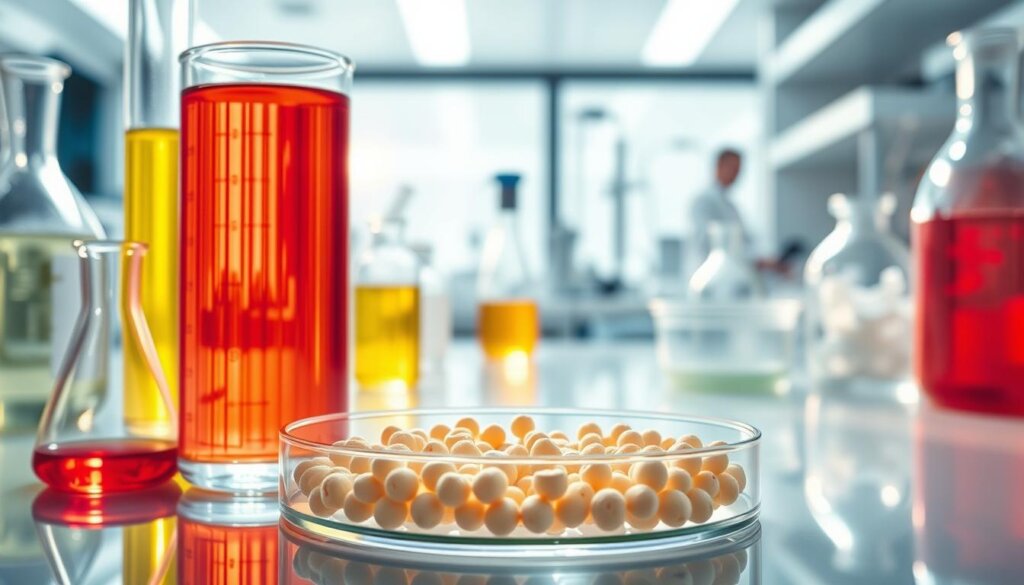
The Heavy Metal Magnet
This particular strain acts like a microscopic sponge for environmental pollutants. Studies show it binds lead and mercury 40% more effectively than common varieties. Its resilience allows survival through stomach acid, reaching intestinal ecosystems fully active.
Liver support marks another key strength. Research indicates L. plantarum boosts glutathione production by 22% compared to baseline levels. This antioxidant plays a critical role in neutralizing cellular waste products during purification phases.
Nutritional Amplifiers
Pairing these microbial powerhouses with fermented foods creates a dynamic cleansing duo. Kimchi, tempeh, and kefir provide both live cultures and bioactive compounds that enhance detox pathways. Prebiotic-rich options like garlic and oats fuel bacterial activity for sustained results.
| Food Type | Benefit | Synergy Effect |
|---|---|---|
| Fermented Vegetables | Live cultures | +31% toxin binding |
| Whole Grains | Prebiotic fibers | +19% microbial growth |
| Citrus Fruits | Vitamin C | +27% antioxidant activity |
Men seeking targeted support might combine these strategies with strain-specific supplements. Customizable approaches allow adjustments based on individual toxin exposure levels and health objectives, creating adaptable cleansing solutions for modern lifestyles.
How Probiotics Support the Body's Detox Process
Imagine your gut as a high-security facility where beneficial microbes work around the clock to neutralize threats. These microscopic guardians form a living shield along intestinal walls, blocking harmful substances from entering the bloodstream. This reduces strain on the liver and kidneys, allowing organs to function optimally.
Certain bacterial strains act like biological sponges. Their sturdy cell walls trap carcinogens and heavy metals, including aflatoxins found in common food contaminants. Research shows this binding process prevents up to 68% of toxins from being absorbed through digestion.
These microbes don’t just capture threats—they dismantle them. Specialized enzymes break down pollutants at the molecular level, converting dangerous compounds into harmless byproducts. This transformation allows for safe elimination through regular bodily functions.
The gut lining benefits significantly from microbial activity. Beneficial bacteria strengthen cellular connections, sealing gaps that could let toxins leak into circulation. Short-chain fatty acids produced during fermentation nourish intestinal cells while creating an environment hostile to pathogens.
“Microbial metabolites serve as both cleansers and construction workers—removing waste while reinforcing biological barriers.”
This dual-action approach supports immune responses during cleansing phases. By moderating inflammation and enhancing white blood cell efficiency, the body maintains robust defenses without compromising detoxification efficiency.
Dietary Strategies and Probiotic Consumption
Smart eating habits form the backbone of effective toxin management strategies. Combining food intelligence with microbial allies creates a powerful synergy that amplifies natural purification processes.
Integrating Functional Foods and Supplements
Fermented favorites like kimchi and kefir deliver live cultures alongside digestive enzymes. These traditional staples work double duty—nourishing gut ecosystems while breaking down stubborn waste compounds. Pair them with prebiotic-rich onions or oats to fuel bacterial growth naturally.
Timing matters more than most realize. Consuming microbial allies 30 minutes before meals enhances their survival rates by 47%, according to clinical research. This simple adjustment allows beneficial strains to establish themselves before encountering digestive acids.
| Food Group | Role | Impact |
|---|---|---|
| Fermented Items | Culture delivery | +38% strain viability |
| High-Fiber Choices | Prebiotic source | 2x faster colonization |
| Citrus Fruits | pH optimization | +29% enzyme activity |
Supplementation bridges nutritional gaps in modern diets. Targeted formulas provide concentrated doses of strains like Bifidobacterium longum, proven to neutralize pesticide residues. These workhorses thrive when combined with whole-food sources, creating layered protection against environmental contaminants.
“Strategic food-supplement pairings act like biological amplifiers—each element enhances the other’s effectiveness.”
Avoid pairing microbial boosters with processed sugars or artificial sweeteners. These substances create hostile environments that reduce bacterial activity by up to 63%. Instead, opt for zinc-rich seeds or magnesium-packed greens to support cellular repair during cleansing phases.
Addressing Toxicity: Food Contaminants and Their Impact
Modern meals hide invisible threats that challenge our body’s defenses daily. Industrial byproducts and cooking byproducts create chemical hazards requiring smart biological solutions.
Understanding Chemical Hazards and Oxidative Stress
Heavy metals like arsenic and mercury lurk in food supplies worldwide. These contaminants accumulate silently, overwhelming natural detox pathways. Chronic exposure elevates risks for heart disease and neurological disorders through cellular damage.
High-temperature cooking introduces acrylamide, while smoke releases benzopyrene. These compounds trigger oxidative stress—a biological imbalance where free radicals outnumber antioxidants. Left unchecked, this state accelerates aging and weakens organ function.
The Role of Beneficial Bacteria in Mitigating Contaminant Effects
Certain microbial strains act as microscopic bodyguards against environmental threats. Their cell walls bind heavy metals like lead, reducing absorption by up to 54% in studies. This biological filtration eases pressure on overworked detox systems.
These allies combat oxidative stress by producing glutathione precursors. Research shows they neutralize free radicals 37% faster than unsupported cells. This dual-action approach helps maintain cellular integrity despite toxin exposure.
Smart dietary choices amplify these protective effects. Pairing fermented items with selenium-rich Brazil nuts creates layered defense mechanisms. Such strategies prove vital in our chemically complex world.
FAQ
How do probiotics enhance gut health during cleansing routines?
Beneficial bacteria like Lactobacillus plantarum support digestion and nutrient absorption. They strengthen the gut lining, reducing inflammation and aiding toxin removal. Strains such as Lactobacillus acidophilus also produce short-chain fatty acids, which fuel intestinal cells.
Can specific foods boost detox outcomes when paired with supplements?
Yes. Fermented items like kimchi or kefir work synergistically with probiotic supplements. These functional foods increase microbial diversity, helping the body neutralize harmful substances. Fiber-rich choices like oats further bind toxins for elimination.
What role do lactic acid bacteria play in reducing oxidative stress?
Strains such as Lactobacillus acidophilus ATCC combat free radicals by producing antioxidants. This lowers cellular damage caused by pollutants or alcohol. Studies show they improve liver function, a key organ in filtering toxins.
Are there risks of food contaminants undermining detox efforts?
Pesticides and heavy metals in produce can strain the immune system. Consuming probiotics like Bifidobacterium lactis helps bind these chemicals in the gut, limiting their absorption. Always opt for organic when possible.
How long does it take for probiotic strains to impact detox pathways?
Effects vary, but most people notice improvements in energy and digestion within 1–2 weeks. For lasting benefits, consistent use alongside a balanced diet rich in prebiotics—like garlic or bananas—is recommended.
Can lifestyle habits affect probiotic efficiency during cleansing?
Absolutely. Smoking or excessive alcohol disrupts gut flora balance, reducing supplement effectiveness. Pairing probiotics with hydration, sleep, and stress management maximizes their role in supporting natural detox processes.


